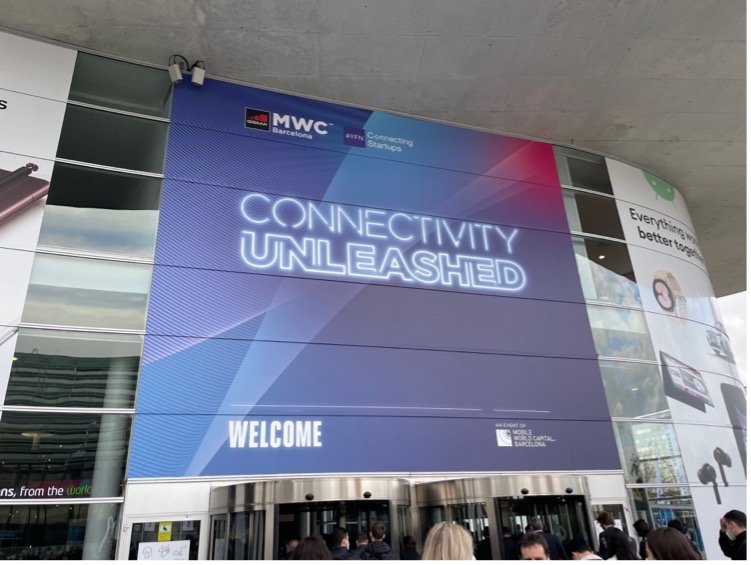As AI becomes more and more integrated into the modern world, all areas of business are finding ways to adopt and adapt. On Episode 19 of The Connectivity Matters Podcast we were joined by Stephen Spellicy, the Vice President of Marketing, Enablement & Business Development at VMware, to talk about how the connectivity industry is moving towards AI adoption. Read on for his insights.
Is there a genuine motivation for operators to bring in AI?
Well, this is a conundrum that many have. They’re building the new network and expecting new incremental revenue, then the next step is figuring out ‘how do I reap the benefits of that?’ Part of the business strategy should be growing your footprint and retaining it so that you can drive higher levels of ARPU out of your consumer subscribers and enterprise customers. The companies that are looking at being data-driven in the way they build their business and how they execute in the market are the ones who are likely going to survive.
We’ve seen consolidation across the board in the wider industry (not only in telecom and technology) where the larger players gobbling up smaller companies. Where you see more of this consolidation and the shedding of non-productive assets, markets are becoming more focused on the outcomes of their business strategy. It starts with data and the injection of an advanced labour force that is more keen to understand the trends of our technology sphere. Data science is an area where telecoms probably lack skilled labour. Maybe in the next five years, we’ll see more availability of these resources. But today, telecom should take that first mover advantage to pull those folks into their organisation and start injecting data into everything they do.
A common perception is that telco is not as exciting as other applications for AI or data science, so how could they attract more talent as an industry?
If you’ve already built a new network and you’re trying to drive higher revenue, you’ll need the right talent. This talent isn’t cheap, but it’s an investment in the future. Vigorous recruiting, both in the field and outside of the field, is necessary. What I mean by that is that telecom traditionally looks for people with a vast understanding of wireless cellular technology, traditional fixed line type technologies and networking backgrounds, but they may need to look into adjacencies. Where are the problem solvers who understand data models and data science, who can be applied to solving telco challenges? Looking across various adjacencies and verticals to find the right kind of talent is going to be effectively an empowering element as companies move forward.

Training, enabling and investing in your labour force is also really important. Adopting some of these methodologies creates more opportunities for the people already in your company. In other words, utilising the resources you have to drive the highest level of productivity will enable your team to be creative in problem-solving. One of the best ways to create a happy and productive workforce is to give them really hard problems to solve and let them find creative ways to solve those problems. It creates a level of engagement and interest in their job, and it creates more loyalty to the company because it shows that this is a company that challenges them, rewards them when they succeed and invests in them – which are all essential ingredient ingredients that telco needs to consider as they develop their labour force moving forward.
How much responsibility does the telco industry have for ensuring the correct use of AI alongside this new talent?
The first piece of any journey with AI, particularly when we’re talking about data or using information in order to dictate outcomes, is effectively finding a programmatic way to treat data in a sensitive way. With customer-related user-related data, personal identifiable information, etc, you have to make sure that the data that you collect is protected to ensure the privacy and security of your customers. Just from a broad industry perspective across not only telco but any enterprise verticals, this is a common practice that starts with protecting the information that you’re collecting and utilising it as a part of the build of your models.
The other piece on the ethical side would be to do no harm. You have to use technology to improve operations, the quality of service for your customers and the lives of your employees. Effectively, when you look at your labour force, how do you get the very best out of the team that’s in place? We’re not trying to use automation and AI to make jobs obsolete, we’re trying to use automation and AI to make those jobs easier for those people to get done. Looking at it that way, you’ll never have enough people to do the jobs. These skilled workers don’t have enough time in the day, and you don’t have enough heads in front of computer screens to get the job done, especially as we build out the 5G network and beyond to 6G. The enormity of that challenge is too large for the workforce we have today, so you need technology to augment those people.
To learn more about integrating AI into your telco workforce, tune into Episode 19 of The Connectivity Matters Podcast here.
We sit down regularly with some of the biggest names in our industry, we dedicate our podcast to the stories of leaders in the technologies industries that bring us closer together. Follow the link here to see some of our latest episodes and don’t forget to subscribe.













